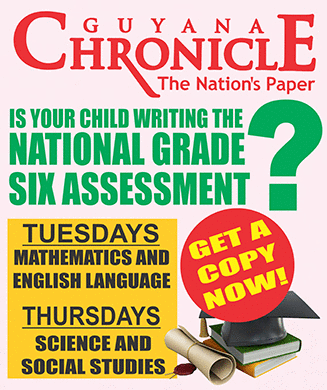Dear Editor,
DR. CHEDDI Jagan sat on the third ‘step’ of the stairway leading upstairs from the modestly furnished living room of his home. His bare feet resting on the first ‘step.’ Apparently, he loved sitting there whenever we met, which occurred at least twice a month between mid-1977-78.
During this period, sugar workers were on strike, foodstuffs were scarce due to import bans, and members of questionable state-sanctioned organisations such as the House of Israel were terrorising opposition supporters at publicly held meetings. Electrical blackouts were commonplace, and Burnham was orchestrating a constitutional referendum that would enable him to retain power and continue his authoritarian dominance over the country. Under these circumstances, Dr. Jagan and I discussed various approaches to counter Burnham’s oppressive actions and policies.
Being the opposition leader at the time, Dr. Jagan had proposed the formation of a coalition government, which Burnham rejected. As Dr. Jagan explained, Burnham’s rejection led to his conceptualisation of a National Front Government. Upon engaging me in discussions of his ideas, he asked if I could prepare a paper on the subject, part of which appeared in the Sunday’s publication of the Mirror.
In sum, as Dr. Jagan envisioned, the NFG would be a coalition government constituted of all progressive political parties. Dr. Jagan believed that such governmental formation would result in the creation of a racially mixed political structure with equal representation and distribution of power. And, with such a representative government in place, policies would be promulgated to develop all population and economic sectors, eventually resulting in the social transformation of a united Guyana in which all races become equally represented and empowered.
In our private conversations, while I supported Dr. Jagan’s premise of a National Front Government, I respectfully expressed to him my apprehension. This, I did, given Guyana’s colonial history of divide and control whereby racial segmentation, ethnic rivalries and disharmonies were ingeniously crafted to facilitate and ensure colonisers prolonged authoritarian domination. I also politely voiced doubts of a multiparty coalition NFG, and the structure and relations of power sharing, especially as these pertain to such factors as: (i) Leadership styles; (ii) Equitable distribution of governmental powers; (iii) Internal rivalries and rifts; (iv) Ideological differences; (v) Resolution of entrenched political partisanship based on some politicians historical political appeals to racial and ethnic indifferences; and that (vi) The stability and continuation of a multiparty coalition NFG presupposes the reelection of participating politicians which no one could guarantee.
Aware of my educational background as a social scientist, Dr. Jagan looked at me and smiled; so, I assumed. Or, perhaps, it was due to my youth and political inexperience. As to the reason he smiled, I will never know.
Ever since my discussions with Dr. Jagan, I often wondered about the primacy of a National Front Government, but not as conceptualised by Dr. Jagan. My lingering doubts with Dr. Jagan’s conceptualisation, rest on the above stated reasons, followed by the consequential debacles of Guyana’s PNC-UF, and APNU-AFC coalition governments. I firmly believe that a National Front Government can be constituted by a singular political party whose (a) representatives reflect the structure and relations of the Guyanese society, with (b) a shared dedication and commitment to the development of the country and the socio-economic upliftment of all citizens.
Today, Guyanese can objectively observe for themselves that the current PPPC administration exemplifies the essence of a National Front Government. President Irfaan Ali, Vice President Bharrat Jagdeo, and Prime Minister Mark Phillips, along with the political and racial composition of government ministers, administrators, and ambassadors, all confirm with the hallmarks of a formidable and unique National Front Government.
The PPPC’s promulgation and articulation of developmental policies cater to the well-being and advancement of all Guyanese, irrespective of race, ethnicity, or traditional political loyalties. Moreover, President Ali, Vice President Jagdeo, and Prime Minister Mark Phillips have all demonstrated their unyielding commitment to the achievement of a One Guyanese unity.
This, they regularly demonstrate by their community outreach campaigns, addressing local concerns brought to their attention, and instituting infrastructural changes to improve health, education, safety, and welfare of citizens in every sector of the country.
It would be disingenuous to overlook, or underplay that Guyana is a racially segmented society, one designed by Colonials who implemented policies that fostered enduring racial and ethnic disharmonies, rivalries, and distrusts between Africans and Indians. And, as the Guyanese reality attests, while Indians and African happen to reside in close proximity to one another, their social-cultural worlds, and modes of existence, remained relatively autonomous.
However, since 2020, with the coming to power of the PPPC, a true National Front Government began to reveal itself in its equal representation of all, and in orchestrating the continuous erosion of racial and ethnic separatism that has augmented the production of a One Guyanese unity. The totality of such unity does not evince overnight, or in a few years, but gradually emerges from the avowed commitment and dedication of a racially and ethnically diverse cadre of policy makers which the PPPC already exemplifies. In such PPPC’s accomplishments, Dr. Jagan’s dreams of a Guyanese unity increasingly manifest itself daily in plain sight.
Regards,
Narayan Persaud, PhD
Professor Emeritus

Equal representation for all
SHARE THIS ARTICLE :
Facebook
Twitter
WhatsApp



.jpg)







